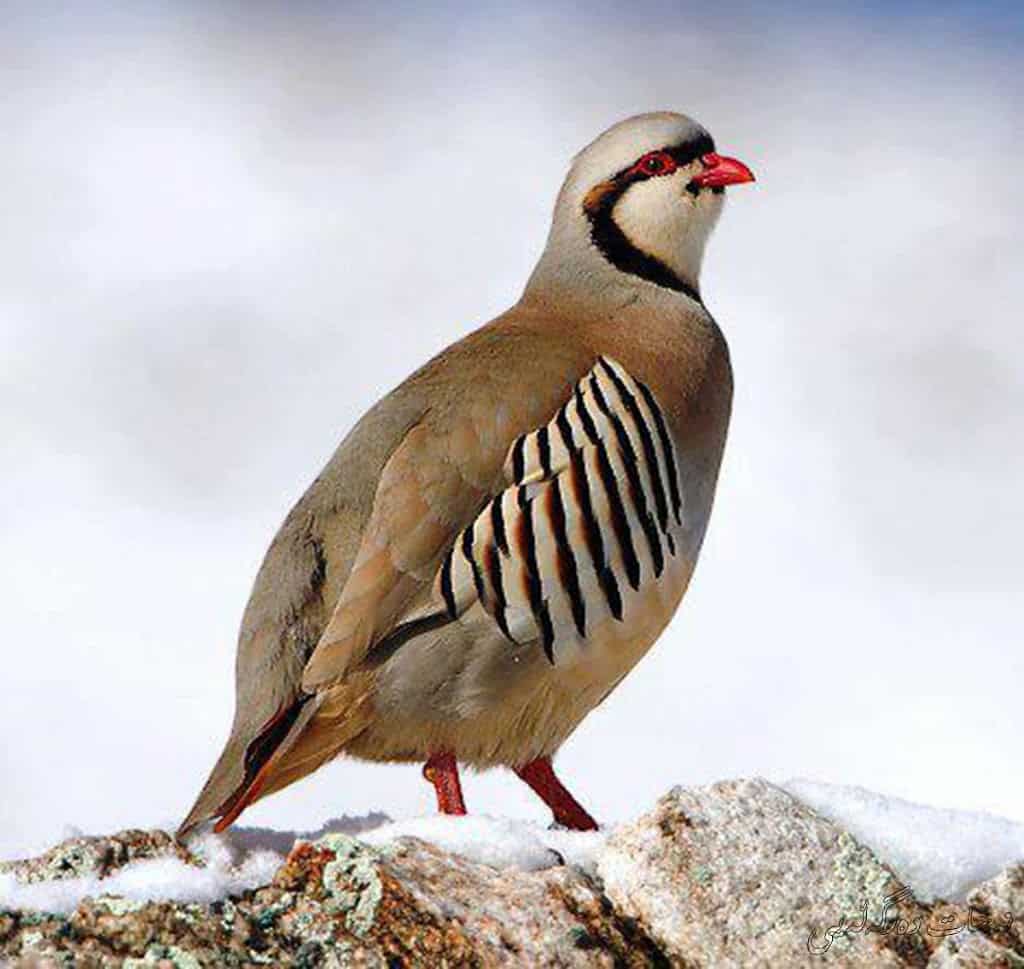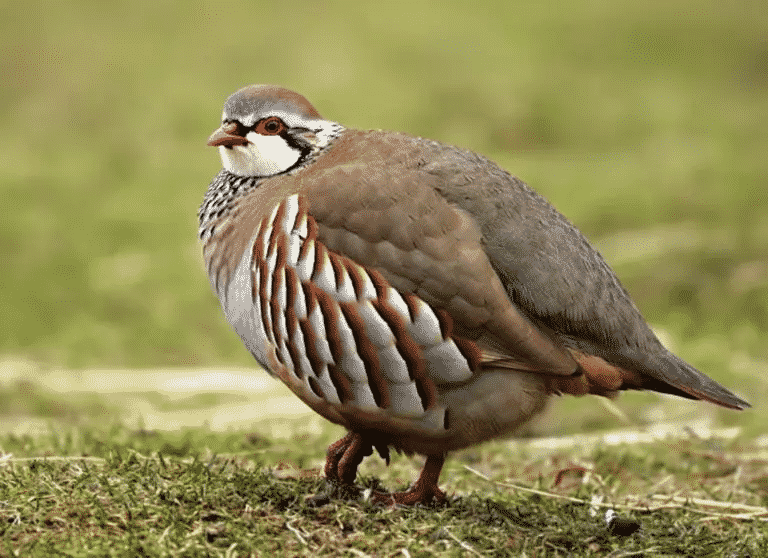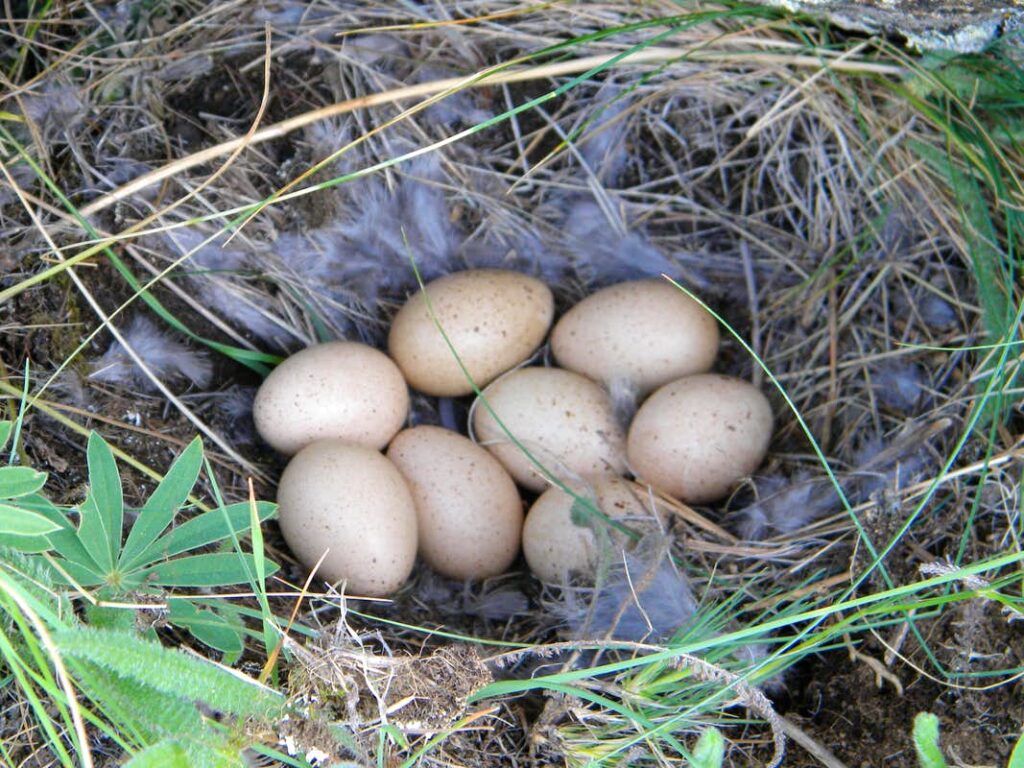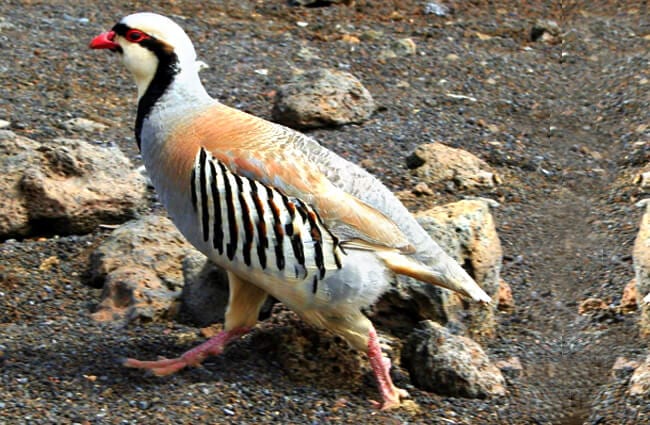Known as the Pakistan national bird, Chukar Partridge is the focus of the article, which will provide information on the bird as well as some fascinating facts about it.
Many people don’t know” what is national bird of Pakistan?”, and it is the most searched question on internet. This article is going to be very informative for them.
National Bird of Pakistan
The Pakistan national bird name is Chukar Partridge. And it is famous as “chakor” commonly in Pakistan. It is one of the National Symbol of Pakistan.
Pakistan’s National Bird-Chukar Partridge birds have a beautiful voice. Most people like having it in their homes. In Punjab, Pakistan, the Chakor is seen as a symbol of love and passion.

According to North Indian and Pakistani tradition, including in Hindu culture, the Chukar Partridge can represent a passionate, and sometimes unrequited, love for another person. It is said to be head over heels in love with the moon and to spend its days staring at it.
In some areas, they are maintained as fighting birds during in the breeding season due to their ferocious behavior during the breeding season. In conclusion, the Chukar partridge has a strong case for being designated as Pakistan’s national bird symbol.
Chukars are being raised expressly for a hunt in some parts of Pakistan as well, owing to their unusual and tough nature, despite the fact that this is deemed illegal by Officials. In Pakistan and Afghanistan, the periods of June and July are regarded to be the prime hunting months for Chukars.
Pakistan is home with some of the most uncommon and special birds in the world, owing to the country’s diversified climate and varied terrain.
Every year, millions of migrating birds from all over the world, particularly from Siberia, are drawn to its wetlands and lakes, which, in addition to its wild species in their natural environment in the dense forests and mountains, provide the excellent opportunity for birdwatchers from all over the world to observe them.
numerous conservation areas have been established by the government, which has allowed both native and migrant birds to thrive there. During the hunting season, hunters are only permitted to hunt if they have a hunting permit or a hunting license.
Description of Chukar Partridge
The Chukar is a round-shaped bird with a length of 34-38 cm. It has a light brown back & grayish breasts, as well as a buff stomach. It has a white face with such a black gorget on it. Its flanks are striped with rufous, and its legs are bright red.

The chukar is an upland gamebird native to Eurasian grasslands that belongs to the pheasant species. This sparrow has a historical range in Asia that extends from Pakistan, Kashmir, & Afghan to southeastern Europe.
It is closely linked to and similar to its western counterpart, the Red-legged pheasant, Alectoris rufa, which has a composition similar in Europe.
This has been widely imported and has maintained itself in countries such as the Canada, US, Hawaii and New zealand,. Hybrids between this bird and the Red-legged Partridge, which was brought into the country, are frequent in Great Britain.
Chukar pheasants are often in the 32-35cm size ranging. The Chukar is incapable of long-haul flight.
Some facts about Pakistan National Bird Chakor
| Scientific name of chukar is | Alectoris chukar |
| Commonly Found in | Pakistan to Afganistan |
| Common Name of chukar in Pakistan | Chakor |
| Kingdom of Chukar Partridge is | Animalia |
| Class that chukar belongs | Aves |
| Phylum of chukar | Chordata |
| Order of the chakor bird | Galliformes |
| Family of the chukar | Phasiianidae |
| Genus of the chakor | Alectoris |
| Species type that chakor bird belongs | A. Chukar |
| Average Length of chukar is | 34–38 cm; |
| Average Speed of chakor bird is | 20 km/h |
| Average Weight of chukar is | Male 538–765 g; female 367-538g |
| Average Lifespan of chukar | 2-5 years in wild |
| Habitat | prefer rocky, steep, and open hillsides |
Chukar’s Behavior
Chukar partridges are usually eats a huge spectrum of grains and bugs to eat. They prefer to dwell with a community of 5-40 members called coveys. It nests in a sparsely lined dirt scrapes releasing 8 to 20 eggs. While in captive, it would release 1 egg per day during the breeding cycle if the eggs are gathered daily.
When faced with a danger, it chooses to run instead of fly, but it can fly for a short distance if necessary because to its rounded wings. Chakors are a difficult bird to hunt because of their surgical upwards flight and rapid disappearances into the undergrowth, making them difficult to locate.
Chukar’s Partridge Food
As with other birds, chukars are vegetarians who mostly eat leaves, insects, and seeds—particularly those from sunflower, mustard, and dwarf pine—to supplement their diet. Chukars eat a variety of plants, including sagebrush, which is abundant throughout North America.
Chukar’s Egg structure

From 8 to 14 years old; often among 6 and 20 years old or even more. With reddish-brown dots, the color ranges from yellow to pale beige. In most cases, the female is responsible for the incubation process with between 22 – 24 days. Sometimes even a female may lay 2 distinct clutches of eggs, with the male hatching one clutch whereas the mother nurtures the other.
Nesting of Chukar
As part of the wooing ritual, the male tilts his head and revolves around the female. In order to imitate feeding, each individual of the couple make moves; the male can really feed the female. Nest: The location of the nest is on the surface, hidden away beneath a bush or beneath a jutting rock. The nest is a hollow with a thick layer of grass, branches, and feathers covering the interior.
In culture
The name is onomatopoeic, and references to chakor in Sanskrit, a northern Indian language, dating all the way back to the Markandeya Purana (Book of the Dead) (c. 250-500 AD). When it comes to Indian culture, the Chukar Partridge can represent ardent, and quite often unrequited, love.
The chukar can also represent unrequited love in Pakistani culture. It is claimed to be head over heels in love with the moon and to stare at it nonstop. Because of their ferocious behavior during the breeding season, they are sometimes maintained as fighting birds in several places of the world.
Conservation

Chukars were originally found in Eurasia, but they were introduced to North America via South Asia in the 1930s and have successfully reproduced there.
Chukars have indeed been effectively extending their environment & distribution across the globe in western states such as California, Nevada, Utah, Colorado, and British Columbia, Canada, as well as in British Columbia, United States.
Chukars are estimated to have a population of roughly 10 million individuals, according to the North American Breeding Bird Survey, which also states that their species is not affected by hunting. As a result, the species of Chukars is not considered to be endangered at this time.
Wrapping Up
This was everything about the national bird of Pakistan. I hope you have found this article to be of helpful. If you answered “ yes ”, please spread the word to your family and friends.


